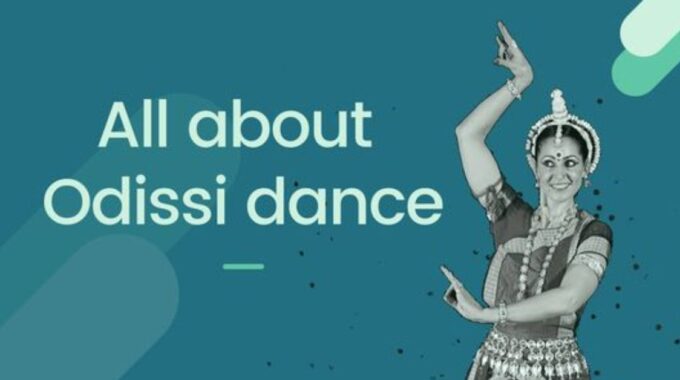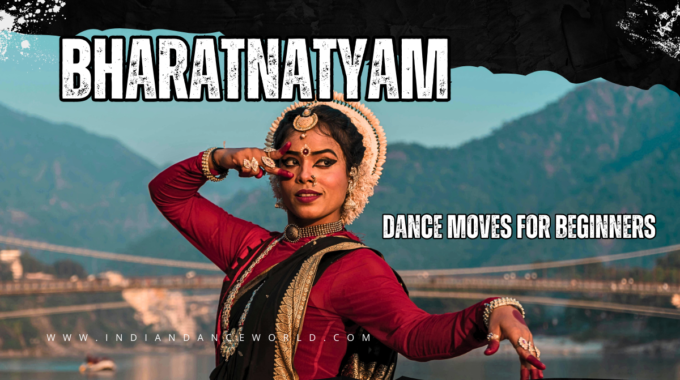Weight loss is challenging for many. When it comes to losing weight exercise plays a…

Information about Odissi dance – Know in the Deep classical dance
What is Odissi dance?
To know all about Odissi dance first need to know Odissi dance, The part of Indian classical dance form is the Odissi dance style generated from Odisha, also mentioned as Orissa name in chronic literature, and a leading old Indian classical dance which is developed from Hindu temples in Oddisa – an eastern state of India. in Odissi history, it was performed by females, and also articulated devotional novel or mental ideas, especially of Vaishnavism (Vishnu as Jagannath). Odissi drama keeps as well-spoken ideas of another convention namely them respective to Hindu lord Shiva or Surya, also like Hindu deity (Shaktism).
The principled base of Odissi footprints to the old Sanskrit recital Natya Shastra, its entity in oldness bear out by dance poses in the statue of Odissi temples, and archeological sites respective to Hinduism, Buddhism or Jainism. during Islamic rule, the era decline of the Odissi dance sequence was compressed by British law. The compression was contradicted by Indians, for its revival, remake, and spread after India obtained liberty from the colonist law. Odissi is traditionally a dance or play style of performance art, where the maestro or melodist plays out a fictional novel, dreamy news, and religious stanza of the Hindu theme, using emblematic dress, body motion, expressions, or mudras (pointing or hint idiom) set out in pristine Sanskrit literature. This is featured or learned as a united of basic dance motif called the Bhangas (symmetrical body flexion, stance). It is inset lower (footwork), middle (torso), or uppermost (hands or head) like 3 sources of perfecting demonstration and viewer affiance with geometrical similarity or rhythmic music echo. an Odissi execution repertory comprises invocation, nritta (net dance), Nritya (meaningful dance), Natya (dance play), or moksha (dance climax connotates liberty of the spirit or psychical liberation). Traditionary Odissi dance exists in 2 general styles, 1st improved by females or focussed on deep, spiritual shrine dance (Mahari’s); the 2nd improved by men’s costume as women (Gotipuas) which differenced to comprise athletic or acrobatic activity, or were played from festal things in temples to common accommodating entertainment. present-days Odissi output by Indian maestro has offered a various spectrum of practical ideas, civilization fusion, themes, or drama. the Odissi was only an Indian dance style offered in Michael Jackson’s 1991 fruitful single Black and White.
History
The roots of Odissi were found in Natya Shastra, the Old Hindu Sanskrit recital of dramatics arts. basic dancing ace mentioned in Natyashastra, 108 all of them, was equal to those in Odissi. Natya Shastra’s credit goes to the pristine savant Bharata Muni, and his 1st total collection is dated around between 200 BCE to 200 CE, but guess between 500 BCE to 500 CE. The most hoped-for translation of Natya Shastra recital formation concerning 6000 poetry formatted in 36 sections. The text expressed by Natalia Lidova set out the law of Tāṇḍava dance (Shiva), the law of rasa, of bhāva, gestures, executive techniques, key steps, and standing position – all are part of Indian classical dance. Dance or play arts tell this old text are a genre of expression of metaphysical ideas, attributes, or the summary of Vedas. Natya Shastra describes 4 instincts (law of meaningful delivery) in prevalence – Dakshinatya, Avanti, Odra-Magadhi, or Panchali; of these, the Odra describes Odisha.
More straight historic proof of dance or music as an old play art was found in archaeologic centers like caverns or in the temple engravings of Bhubaneswar, Puri, or Konarak. The Manchapuri cavern in Udayagiri point to engravings of musicians or dance, or that have been dated to the moment of Jain prince Kharavela in the 1st and 2nd centenary BCE. The Hathigumpha petrographs also were dated to the homological prince, described dance or music:
The musical sequence of Odisha also has an old foundation. Archaeologists having reported the search of twenty-clef, sharply shaped finished basalt lithophone into Sankarjang, the Odisha highlands, was dated around 1000 BCE.
Basic moves and mudras
Bhangas are The basic ace of Odissi dance. they are made up of 8 belis, and body phases or motions, mixed in several diversities. movements are uthas (nascency and rising), baithas (posture and down), and sthankas (standing). The moves and motion at the dance panel are called chaalis, with the motion tempo mixed with gestures ethically to classical Sanskrit texts. so, for instance, burhas and quick speed inform excitation, whereas a slow confused speed informs despair. For esthetics, motion is centralized on a basic, a Bindu in space and ground, or every dancer has her dreamy category of space, with spins and demonstration kept within it. The leg movement and pada bhedas also dance basic units, or Odissi takes six of these, against to four found in major part of Indian classical dances.
There are three elementary dance positions in Odissi dance:
- Samabhanga – The square stand, by weight uniformly placed on both legs, straight back, arms raised up with elbows bent.
- Abhang – due to serious foot diversion, body load shifts from the side by side, while the feet or marrowbone are diverted outwards, or 1 hip expands sideways.
- Tribhanga – is an S-shaped 4 twist bias of the body, with the trunk turning to 1 side as the skull or hips fold in against the side of the trunk. ahead, the feet or hands draft the body in a ferruginous of 2 squares (rectangle), giving an esthetic structure of context. it is referred to in the pristine Sanskrit texts, or aspects of this are found in the other Hindu dancing Kalaa, however, Tribhanga positions evolved majority in or are especial to Odissi, or these are located in the historical Hindoo shrine pleasure.
Hastas and Mudras are hands pointing that are used to manifest the signification of a passed act. as in all Indian classical dances, the goal of Odissi is in the piece to deliver emotions, spirit, or internal imaginations in the tale from a suitable hand or facial gestures. 63 Hastas are in recent Odissi dancing, or they have the common names and framework like them in the pan-Indian Hindoo texts, however, most nearby matching them in the Abhinaya Chandrika. which are subdivided into three, ethically to the traditionary texts:
- Asamyukta Hasta – Singular hasta Mudras – 28 types (pointing, for example, to communicate a Salame, praying, clasp, energy, bond, swing, cart, shell, shaft, keeping an item, wheel, and here upon on.)
- Samyukta Hasta – both hand Mudras – 24 types (pointing, for example, to hint a flag, moon, kinds of animal and birds, flower, function as greedy, and so on.)
- Nrutya Hand – “net Dance” Mudras
The Mudra system is derived from the “Abhinaya Darpana” by Nandikeshavara and the ancient Natya Shastra of Bharata Muni.
Odissi dance costume
In Odissi dance, the artist is dressed colorfully with makeup or jewelry. The Odissi dancers wear Saree which is brightly colored and is ordinarily of local silk (Pattasari), it’s put on with pleats, and a pleat tailor may have stitched in front, to give maximal flexibility throughout the footwork. the traditional imprints of Odisha with provincial designs or deckings, or probably the Sambalpuri Saree or Bomkai Saree.
The silver rags, a metal favored are included in the jewelry in regional tradition. The hair is bound above, and normally drawn in a detailed bun analogical to a Hindu temple top, and equipped with Seenthi. the moon figure crest of white flowers may be contained in Their hairstyle, and an indian corn crown called Mukoot with peacock feathers (symbolism for Lord Krishna). the tikka is marked on the dancer’s forehead, or graceful with multiple jewelries like as the Allaka (skull piece on where the tikka hangs). the kajal is applied to the eyes.
The earrings spruce the sides of the head, as the necklace decorates the neck. The armlets pair wear by the dancers which is called Bahichudi and Bajuband, on the upper arm. The wrist is covered by the Kankana or bangles. an elaborate belt is wear on the waist and ties down 1 end of the Sari. the bells which are called ghungroo decorated the ankles. the palms or soles of the dancers may be painted with red colored dye which is called Alta.
The dhoti is wear by the male dancers in modern Odissi – broadcloth bound around the waist, pleated for motion, or tucked between feet; normally expands to the knee and lower. The upper body is bare-chested, or Upper body is bare-chested, and a long skinny tortilla translucent sheet wrapping over 1 shoulder or ordinarily tucked down a wide belt.
To know about Bharatanatyam history or kathak dance so you can also know information about Sattriya dance in the Indian dance world



